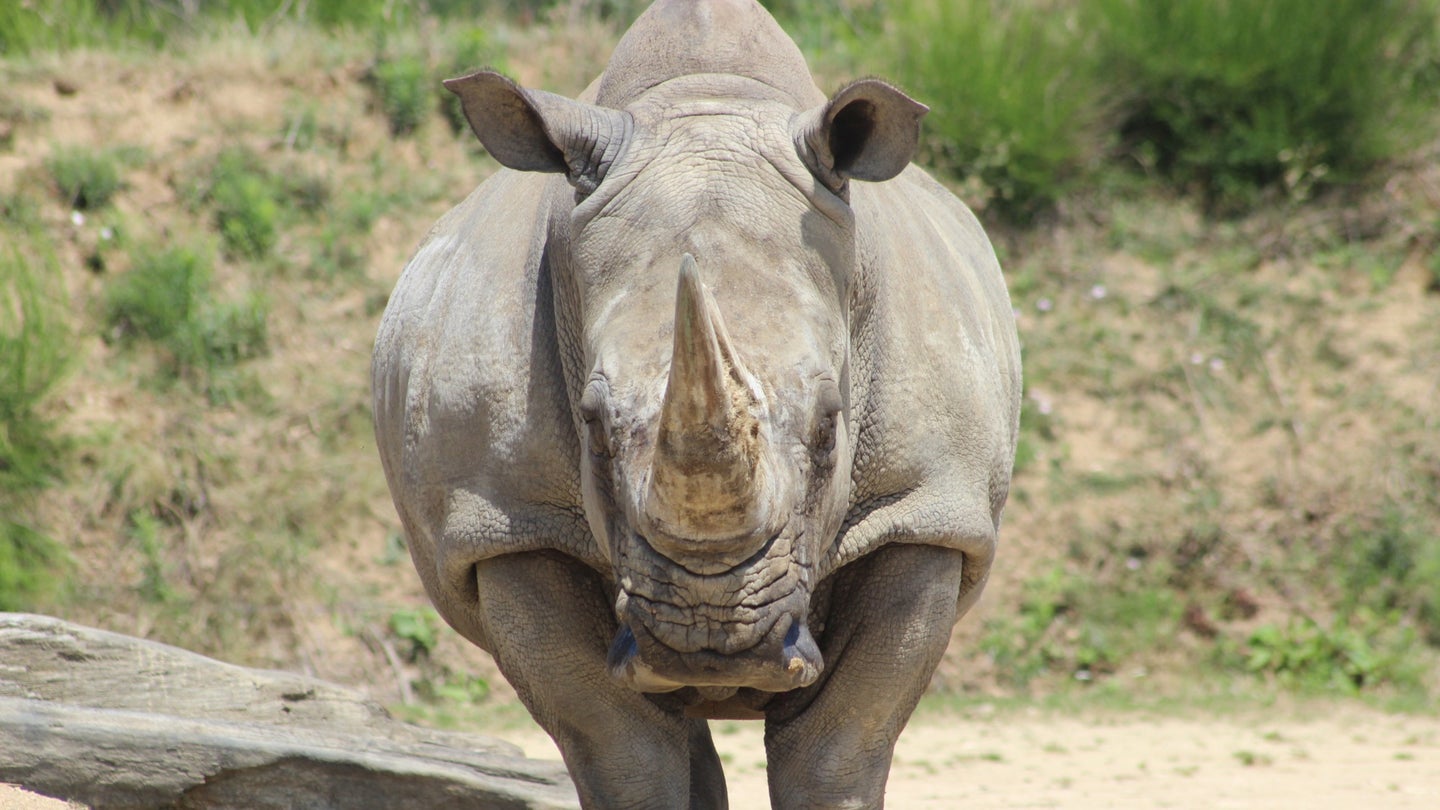Extinct ‘thunder beasts’ went from mini to massive in the blink of an evolutionary eye
The Eocene-era megaherbivores took full advantage of the dinosaur's demise.

After an asteroid that wiped out the dinosaurs struck the Earth, the prehistoric giants lost their dominion over the planet. The mammals that rose up about 66 million years ago during the Eocene Epoch had some big shoes to fill—and they certainly grew into the challenge over time.
[Related: We’re one step closer to identifying the first-ever mammals.]
In a study published May 11 in the journal Science, found that a family of extinct rhinoceros-like herbivores called brontotheres began their time on Earth about the size of a dog, but evolved to reach elephant size over a relatively short amount of time. Brontotheres also may have not reached its full size potential before it went extinct roughly 34 million years ago due to changes in their environment.
With the dinosaurs gone at the end of the Cretaceous period (145 million to 66 million years ago), the mammals of the world had significantly less competition for resources, and scientists believe this led to their success as a family. Brontotheres was one of the biggest winners among mammals, and grew from about coyote-sized, 40 pound creatures into 2,000 pound goliaths. According to the study, they did this over a period of only 16 million years, which is very quick in evolutionary terms.
Brontothere means “thunder beasts,” and their powerful name was inspired by Lakota oral histories of violent thunderstorms accompanied by giants, according to the National Park Service.The animals lived in Asia, Europe, and North America. Most species weighed over a ton, but the biggest roamed what is now the South Dakota Badlands. These giants clocked in at about 8 feet tall and 16 feet long. They are the relatives of modern tapirs, horses, and rhinos, and were equipped with Y-shaped horns on their noses.
The team of researchers on this brontothere size evolution study peered back at the evidence from the family’s fossil record and a family tree of 276 known brontothere individuals. They were fortunate that the fossil record shows most of their evolutionary record, and the team generated computer models to track how the genetic traits of different brontothere species changed.
They also conducted phylogenetic analysis, or an evaluation of the evolutionary avenues that causes a new species to take shape. This helped them determine how such evolutionary changes may be linked or connected to their increase in body size.
The data showed that body size actually evolved in both directions across brontothere species. Some would evolve bigger, while other times a species would evolve smaller. They found that the smaller species were more prone to extinction compared to their bigger cousins, and a trend of bulkier brontotheres persisted longer than the smaller species emerged.
[Related from PopSci+: An ancient era of global warming could hint at our scorching future.]
Towards the end of the Eocene, the remaining brontotheres were true thunder beasts. Their status as megaherbivores likely benefited the beasts, with the smaller animals being more vulnerable to become a carnivore’s dinner. Competition from other big and small herbivores could hardly stand up to the beasts, according to the study.
Unfortunately, at this same time, the climate drastically changed from a more humid herbivore’s paradise to something much more dry. The brontotheres thus lost their evolutionary advantages when the previously lush and green ecosystem dried up. They eventually went extinct about 34 million years ago.
Further research into this family could model the ecological factors like ancient climate shifts that affected how much edible vegetation covered the planet and how it led to the demise of these megaherbivores.
